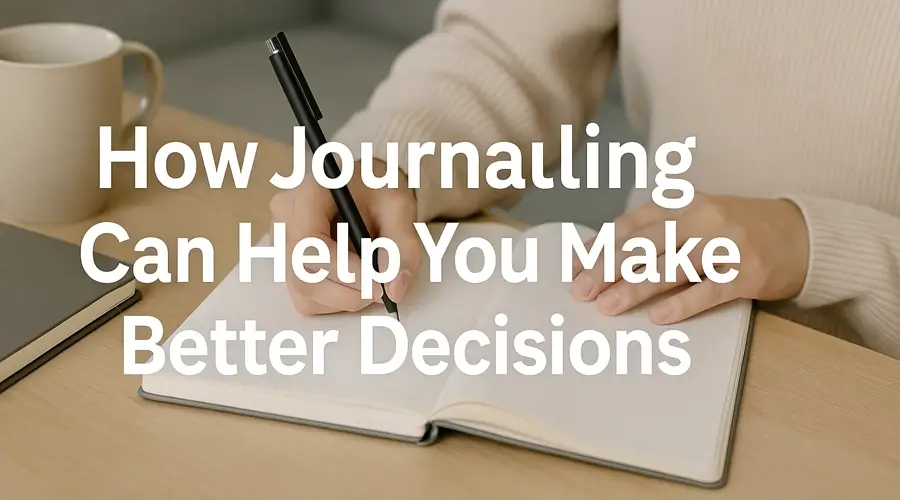In a world that constantly demands our attention, digital journaling has quietly become a powerful refuge for those seeking clarity, self-growth, and emotional balance. For many in their 20s to 40s, it’s not just a trend—it’s a lifeline. Whether it’s sorting through tangled thoughts after a long day or capturing sparks of inspiration before they vanish, journaling on a phone, tablet, or laptop feels more natural than ever. But let’s get one thing straight: a digital journal isn’t a productivity tool in disguise, nor is it a place for curated, perfect entries. It’s not your planner. It’s not your social media feed. It’s your private, judgment-free space to be raw, real, and reflective.
Overcomplicating the Setup
One of the most common digital journaling mistakes is turning the setup phase into a project of its own. You download five different journaling apps, try out endless templates, watch hours of “best digital journaling tools” videos on YouTube, and obsess over fonts, tags, folders, and aesthetic layouts. And before you’ve written a single honest sentence, you’re already overwhelmed and mentally checked out.
Here’s the thing—journaling isn’t supposed to feel like launching a startup. When you overthink the “perfect” platform or chase productivity hacks before developing a habit, you burn out faster than you realize. Instead of actually writing, you’re curating an experience that might look good but feels empty.
The best way to start? Strip it down. Choose one simple, intuitive app (or even just the Notes app on your phone), skip the templates, and write raw. Your journal doesn’t need to be pretty—it needs to be yours.
When you’re just getting started with digital journaling, it’s tempting to think you need the perfect app, the ideal template, and a flawless system before you can begin. But this is where many people stall—they spend so much time setting things up that they never actually write anything meaningful. This is one of the classic digital journaling mistakes: turning the prep into a project.
Let’s look at some common examples:
- You download four different journaling apps (Notion, Day One, Journey, Evernote), then waste hours comparing features.
- You try to create a color-coded system for moods, habits, gratitude, dreams, and reflections—all before writing a single entry.
- You spend an entire evening designing the aesthetic layout of your first page… but leave it blank because it’s “not ready yet.”
- You get caught up in questions like: Should I write in the morning or at night? Should I use prompts? Should I organize by date or theme?
Here’s the thing: all of that setup becomes noise if it keeps you from showing up. Your digital journal doesn’t need to be perfect—it just needs to exist. Choose one simple app, open a blank page, and write what’s on your mind. You can always refine things later, but your thoughts won’t wait forever.

Trying to Be Perfect from Day One
Another sneaky digital journaling mistake? Treating your journal like it’s going to be published. You open the app, type a few lines, then delete them because they “don’t sound right.” You backspace typos, rephrase sentences, and rearrange paragraphs until the entry reads like a blog post. Sound familiar?
This perfectionism might feel productive, but it quietly kills the whole point of journaling: emotional honesty. When you’re obsessing over grammar, punctuation, or whether your entry is “aesthetic” enough, you’re not showing up as yourself—you’re performing. You’re filtering your thoughts instead of expressing them.
Journaling is meant to be messy, unfiltered, and wildly imperfect. It’s a space for confusion, breakthroughs, venting, dreaming, and being completely honest—sometimes in all caps, sometimes with typos. Let it be real. Forget the layout. Forget the grammar. Write like no one’s reading—because no one is.
One of the most sneaky and paralyzing digital journaling mistakes is expecting your journal to look and sound perfect from the very beginning. You might not even realize you’re doing it—but perfectionism can show up in subtle ways that stop you from truly expressing yourself. Instead of being a safe space, your journal turns into a performance.
Here are a few real-life examples of this mistake:
- You write a few sentences… then delete them because they don’t “sound deep enough.”
- You rewrite the same paragraph three times, worrying it’s not structured or smart enough.
- You hesitate to journal at all because your thoughts feel “too messy” to be worth documenting.
- You waste time choosing the “perfect” font, heading size, or emoji before even getting to your emotions.
- You feel like every entry should have a beginning, middle, and end—like a blog post—not realizing you’re blocking your raw voice.
Perfectionism makes you self-conscious in a space that’s meant to be judgment-free. The truth is, your digital journal isn’t for likes, validation, or grammar checks. It’s for you. Your truth doesn’t need polish—it just needs a place to land.
Neglecting Privacy Concerns
When people begin digital journaling, they’re often so focused on expressing themselves that they forget one crucial element: privacy. It’s easy to assume your digital thoughts are safe just because they’re tucked inside an app on your phone—but that’s not always true. In fact, one of the most overlooked yet critical digital journaling mistakes is failing to protect your entries from potential breaches, device sharing, or syncing mishaps.
Many journaling apps store your data in the cloud, which means your thoughts could be sitting on a remote server—sometimes unencrypted. If you’re using shared devices, or if your journal syncs across platforms without secure settings, there’s a real chance someone else could stumble upon your most vulnerable reflections. That one late-night journal entry about your anxiety, your relationship doubts, or your unspoken dreams? It deserves better than sitting exposed on someone else’s screen.
Let’s be real—your journal is more than a note; it’s a mirror to your inner world. So how do you keep that mirror from being shattered?
Start with the basics: use an app that allows password protection or biometric lock (like Face ID or fingerprint). Look for platforms that offer end-to-end encryption, meaning even the service providers can’t access your data. Consider turning off auto-sync to the cloud if the app doesn’t provide encryption, or better yet, use offline journaling tools like Standard Notes or Obsidian, which store everything locally and securely.
And finally—don’t use the same device that your curious sibling, partner, or roommate regularly borrows, unless you’re 100% confident it’s locked down.
In short, don’t let convenience come at the cost of your emotional safety. Your thoughts are sacred, and in the digital world, privacy is self-respect. Protect your words the same way you protect your passwords—because sometimes, they reveal even more.

Using It Only as a To-Do List
Let’s clear something up right now: journaling is not the same as planning, and one of the most common digital journaling mistakes is treating your journal like just another productivity tool. If every entry you write sounds like a checklist—“Buy groceries. Email Sarah. Finish project report.”—you’re missing out on the deeper magic that journaling offers.
There’s a big difference between logging your tasks and understanding your inner world. A digital journal isn’t just a place to keep track of what you did today; it’s where you unpack how those things felt, what they meant to you, what’s been heavy on your mind, or what tiny moment unexpectedly made you smile. When you reduce your journal to a running to-do list, it loses its power to help you reflect, reset, and reconnect with yourself.
Sure, it’s okay to mention what happened in your day—but don’t stop there. Go further. Did you feel anxious before that meeting? Relieved after sending that email? Were you proud of yourself for saying “no” to something? These are the threads that turn an entry into self-discovery, not just task management.
Let your digital journal be your mental playground. Fill it with your thoughts, doubts, questions, random late-night ideas, and small personal wins. Save the errands and deadlines for your planner. Your journal deserves better—and so do you.
Lack of Consistency, Not Frequency
One of the biggest mental blocks people face with digital journaling is the false belief that they have to write every single day—or they’ve somehow failed. This all-or-nothing mindset is one of the most discouraging digital journaling mistakes, and it quietly turns a personal growth tool into yet another item on your guilt list.
Here’s the truth: meaningful journaling isn’t about frequency—it’s about consistency. You don’t need to show up daily; you need to show up intentionally. Even writing once a week, if done with presence and honesty, can have a far greater impact than mindlessly typing something out every night just to say you did.
Consistency is about building a habit that works with your life, not against it. Maybe you write every Sunday night to reflect on the week. Maybe it’s five minutes on your lunch break when something’s weighing on you. The key is to make it sustainable—something you want to return to, not something you have to check off.
Digital journaling should feel like a safe, open space that’s always waiting for you—not a rigid system you’re constantly failing to keep up with. So forget the pressure to journal daily. Instead, find your rhythm, protect it, and show up when it really matters. That’s where the real transformation happens.

Ignoring the Emotional Layer
One of the most overlooked digital journaling mistakes is writing only about what happened—without diving into how it felt. While it might seem like you’re staying consistent by documenting your day, journaling becomes far less powerful when it’s just a recap of events. A real journal entry isn’t a diary of external moments; it’s a reflection of your internal world.
Skimming the surface—“I went to work, had lunch, watched Netflix”—keeps you from the self-awareness and emotional clarity that make journaling truly transformational. To unlock that deeper value, you need to explore what’s beneath the routine.
Here’s how to start peeling back those layers:
- Ask yourself emotional questions
Try simple but powerful prompts like:
– What am I avoiding right now?
– When today did I feel most alive—or most drained?
– What’s something I wish I could say out loud? - Use emojis as emotional cues
If writing feelings feels too heavy at first, start light:
– 😔 = something that didn’t sit right
– 😄 = a moment that sparked joy
– 😠 = a trigger worth unpacking - Describe the emotion, not just the event
Instead of “I had a meeting,” write:
– “I felt small in today’s meeting when I didn’t speak up. I hate that feeling—but I also let it happen.”
Your journal doesn’t need to be deep every time, but it should be real. Emotions are the heartbeat of your entries—don’t leave them out.
When you start acknowledging and expressing your emotions—no matter how messy, confusing, or uncomfortable—they stop controlling you from the background. Your digital journal becomes more than a memory log; it turns into a space for healing, pattern-breaking, and self-trust. You begin to notice what triggers you, what energizes you, and what stories you’ve been silently telling yourself. That’s when journaling shifts from a habit to a tool for transformation.
Conclusion
Digital journaling has the potential to be one of the most powerful tools for self-awareness and emotional growth—but only if you avoid the subtle traps that many fall into. From overcomplicating your setup with too many apps and features, to striving for perfection in every sentence, to neglecting privacy and turning your journal into just another task list, these digital journaling mistakes can quietly drain the joy and meaning out of the practice. Add to that the pressure to write daily and the habit of avoiding emotional depth, and it’s no surprise many people give up before they ever experience the real value.
But here’s the truth: you can begin again, today, on your own terms. You don’t need a perfect app or a beautiful template to make your journal matter. You just need a space to be honest—with yourself, about yourself. Whether that means writing once a week or once a month, typing messy thoughts or dropping in a few emojis, what matters most is that it feels real to you.
It’s not about what you write, it’s about how honest you’re willing to be.
Unlock your mind with VerboAI – the AI journal that understands you.
Capture your thoughts, gain clarity, and evolve with every word.



